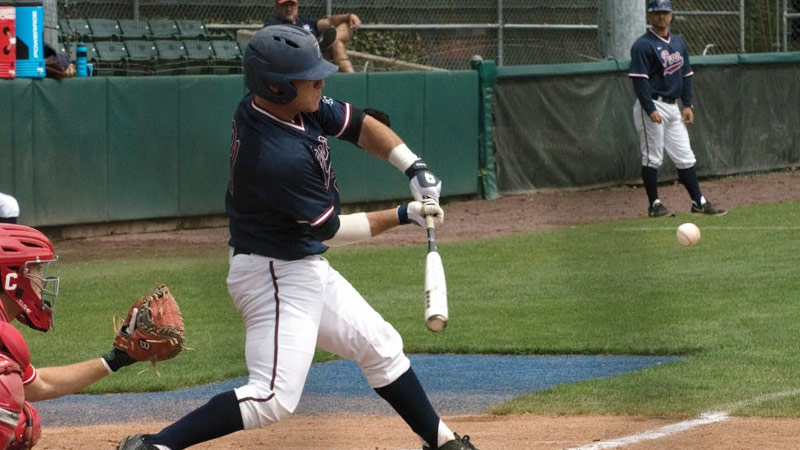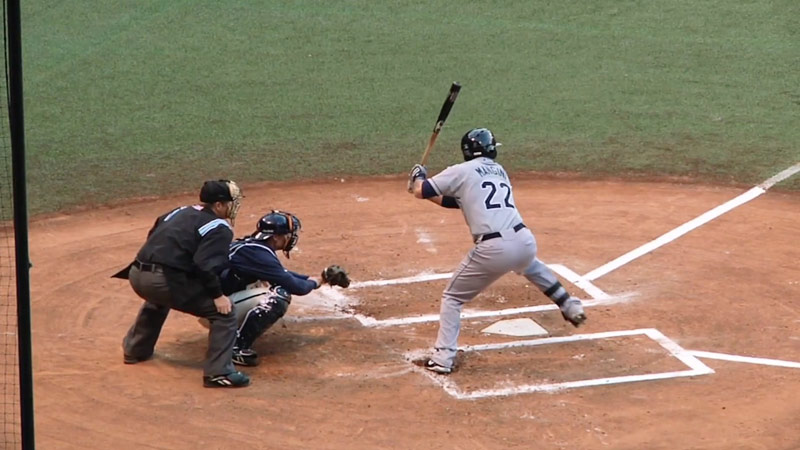Baseball is a sport that captivates millions of fans worldwide, with its intricacies and statistical analysis being an integral part of the game. One such statistic that holds significant importance is the slugging percentage.
In this article, we will delve into the concept of slugging percentage, its calculation, and what constitutes a good slugging percentage in the world of baseball.
By exploring the historical context and analyzing the leaders in slugging percentage, we aim to provide a comprehensive understanding of this statistic.
What Is the Slugging Percentage?
In the world of baseball, slugging percentage serves as a fundamental metric for evaluating a player’s power-hitting ability.
It provides a quantifiable measure of a batter’s effectiveness in generating extra-base hits, including doubles, triples, and home runs, relative to their total number of at-bats.
Slugging percentage showcases a player’s ability to hit for power and serves as an essential statistic for assessing offensive performance.
The term “slugging percentage” originated from the concept of “slugging,” which refers to the act of hitting the ball with great force.
This statistic gained prominence as baseball became more statistically inclined, allowing analysts, scouts, and fans to assess a player’s ability to generate extra-base hits and drive in runs.
How to Calculate Slugging Percentage?
The calculation of the slugging percentage follows a straightforward process. To determine the slugging percentage, the total number of bases a player accumulates from their hits is divided by their total number of at-bats.
The result is a decimal number, typically expressed as a three-digit figure.
The formula for calculating the slugging percentage is as follows:
Slugging Percentage = (Total Bases) / (At-Bats)
The total bases include the number of bases earned from hits, where a single counts as one base, a double is two bases, a triple is three bases, and a home run is four bases.
For example, if a player accumulates 25 total bases in 75 at-bats, their slugging percentage would be calculated as:
Slugging Percentage = 25 / 75 = 0.333
The slugging percentage is typically represented as a decimal, but it is more commonly referred to as a three-digit figure. For instance, a slugging percentage of 0.333 would be expressed as “.333.”
It is important to note that the slugging percentage only considers the extra-base hits and does not include singles in its calculation.
This distinction sets slugging percentage apart from other offensive statistics like batting average, which includes all hits in relation to at-bats.
What Is A Good Slugging Percentage In Baseball?
Determining what constitutes a good slugging percentage in baseball involves considering various factors such as the era, ballpark dimensions, and league average.
While a specific threshold may not be universally agreed upon, certain benchmarks can help evaluate a player’s power-hitting prowess.
Generally, a slugging percentage of .500 or higher is considered excellent and indicative of a consistent power hitter.
This level of slugging percentage demonstrates a player’s ability to consistently generate extra-base hits and drive in runs, contributing significantly to the team’s offensive output.
On the other hand, slugging percentages below .400 are typically considered below average, suggesting a player’s limited power-hitting capabilities.
A slugging percentage below .400 may indicate a higher proportion of singles or a lack of consistent extra-base hits.
At the upper echelon of slugging percentages, figures above .600 are exceptional and often achieved by elite players. These high slugging percentages are a testament to a player’s exceptional power and ability to consistently hit for extra bases.
However, it is important to consider external factors when evaluating slugging percentages.
Factors such as the era in which a player competes, the dimensions of the ballpark they play in, and the league average slugging percentage can impact the interpretation of what constitutes a good slugging percentage.
Who Are the Best Slugging Percentage Leaders?

Source: thedp.com
Throughout the history of baseball, numerous players have showcased exceptional power-hitting abilities, leading to remarkable slugging percentages.
These players have left an indelible mark on the game, establishing themselves as some of the greatest power hitters of all time.
Let’s delve into the achievements of a few notable players with outstanding slugging percentages:
Babe Ruth
Babe Ruth, often referred to as the “Sultan of Swat,” is an iconic figure in baseball history. His prowess as a power hitter revolutionized the game.
Ruth held a career slugging percentage of .690, which remains the highest in baseball history. His incredible power and ability to hit towering home runs contributed to his extraordinary slugging percentage.
Ruth’s slugging prowess played a significant role in his legendary status and solidified his place as one of the greatest players to ever step onto a baseball field.
Barry Bonds
Barry Bonds, despite the controversy surrounding his connection to performance-enhancing drugs, undeniably possessed exceptional power-hitting skills.
Bonds boasted a career slugging percentage of .607, placing him among the all-time leaders in this category. He holds the single-season record for slugging percentage with a mind-boggling .863 in 2001, a testament to his dominance during that remarkable year.
Bonds consistently displayed an impressive combination of power, plate discipline, and bat speed, enabling him to drive the ball and accumulate extra-base hits.
Ted Williams
Ted Williams, widely regarded as one of the greatest hitters in baseball history, left an indelible mark on the game with his remarkable slugging abilities.
Williams achieved a career slugging percentage of .634, showcasing his exceptional power and ability to hit for both average and power.
Known for his disciplined approach at the plate and a keen eye for pitches, Williams consistently displayed remarkable power, driving the ball to all fields.
His slugging prowess, combined with his ability to reach base at an elite level, made him a feared hitter during his era.
Lou Gehrig
Lou Gehrig, a legendary first baseman for the New York Yankees, was renowned for his durability, consistency, and exceptional power. Gehrig finished his career with a slugging percentage of .632, cementing his status as one of the premier power hitters of his time.
His powerful swing generated numerous extra-base hits and home runs, contributing significantly to his team’s offensive production.
Gehrig’s slugging prowess, coupled with his remarkable consecutive games played streak, earned him the nickname “The Iron Horse” and solidified his place in baseball history.
These are just a few examples of players who have achieved exceptional slugging percentages throughout the history of baseball. Their power-hitting prowess, combined with their remarkable achievements, have etched their names in the annals of the sport.
History of Slugging Percentage in Baseball
The concept of slugging percentage traces its roots back to the late 19th century when baseball statistics started gaining prominence. Check out more about the history in the following section.
The Emergence of Baseball Statistics
In the late 19th century, as baseball gained popularity, the need for statistical analysis to evaluate player performance arose. It was during this time that the concept of slugging percentage started to emerge.
Baseball enthusiasts and statisticians began exploring ways to quantify a player’s power-hitting abilities and measure their effectiveness in generating extra-base hits.
Evolution of Calculation Method
Initially, slugging percentage was calculated by dividing the total number of bases a player accumulated by their total number of hits.
This method, known as “total bases divided by hits,” provided a rudimentary understanding of a player’s power-hitting ability. However, it failed to account for the variations in at-bats.
As the understanding of statistics deepened, the calculation method evolved to incorporate at-bats rather than hits.
This adjustment led to a more accurate representation of a player’s power production, as it accounted for the different number of opportunities a player had to generate extra-base hits.
Integration into Mainstream Statistics
As the importance of slugging percentage became apparent, it gradually found its place among the core baseball statistics.
In addition to traditional metrics like batting average and runs batted in (RBI), slugging percentage became recognized as a vital indicator of a player’s offensive prowess.
Advanced Statistical Analysis
With the advent of advanced statistical analysis, such as sabermetrics, slugging percentages gained even greater significance. Sabermetrics focuses on understanding the underlying factors that contribute to team success and player performance.
Slugging percentage played a crucial role in this approach as it provided insights into a player’s ability to generate extra-base hits, which often correlate with scoring runs.
Technological Advancements
The integration of technology, particularly in the form of video analysis and advanced tracking systems, revolutionized the evaluation of slugging percentages.
Video analysis allowed for more in-depth scrutiny of a player’s swing mechanics, launch angles, and exit velocities, providing a deeper understanding of power-hitting abilities.
Furthermore, the introduction of advanced tracking systems, such as Statcast, enabled the collection of detailed data on batted balls, including their distance, speed off the bat, and launch angles.
This data enriched the assessment of slugging percentage, allowing for a more comprehensive analysis of a player’s power production.
Historical Context and Comparisons
To fully appreciate a player’s slugging percentage, it is essential to consider the historical context and compare it to players from different eras.
The evolution of the game, changes in pitching, modifications to ballparks, and variations in offensive strategies can all influence slugging percentages.
For example, players from the “Dead Ball Era” (pre-1920) often had lower slugging percentages due to the lack of power-focused strategies and the heavier, less lively baseballs used at the time.
On the other hand, players from the “Steroid Era” (1990s-early 2000s) experienced inflated slugging percentages due to the widespread use of performance-enhancing substances.
FAQs
Does slugging percentage include singles?
No, a slugging percentage only considers extra-base hits, such as doubles, triples, and home runs. Singles are not included in the calculation.
How does slugging percentage differ from batting average?
Slugging percentage and batting average are two distinct statistics. The batting average represents the number of hits a player achieves divided by their total number of at-bats. It includes all hits, including singles, doubles, triples, and home runs.
On the other hand, slugging percentage focuses solely on the extra-base hits and measures the total bases achieved per at-bat. It provides a more comprehensive assessment of a player’s power-hitting abilities.
Can a player have a slugging percentage over 1.000?
Yes, it is possible for a player to have a slugging percentage over 1.000. This occurs when a player accumulates more bases than at-bats. For example, if a player has 10 at-bats and achieves 15 total bases, their slugging percentage would be calculated as 15/10 = 1.500.
A slugging percentage over 1.000 indicates an exceptional ability to generate extra-base hits and is often achieved by power hitters who consistently produce at a high level.
Are there any drawbacks to relying solely on slugging percentage?
While slugging percentage provides valuable insights into a player’s power-hitting abilities, it does have limitations when used as the sole measure of offensive performance.
Slugging percentage neglects other essential aspects of a player’s offensive contributions, such as on-base percentage (OBP), situational hitting, and the ability to draw walks.
Does slugging percentage account for the difficulty of hitting in different ballparks?
No, the slugging percentage does not consider the dimensions or characteristics of specific ballparks. It measures a player’s power-hitting abilities based on the total bases achieved per at-bat, regardless of where the games are played.
Therefore, slugging percentage alone does not provide insights into how a player’s performance may be influenced by the dimensions or environmental factors of different ballparks.
Bottom Line
Slugging percentage serves as a vital statistic in evaluating a baseball player’s power-hitting abilities. While the definition of a good slugging percentage can be subjective, it generally indicates a player’s capacity to generate extra-base hits.
By examining the historical context and exploring the achievements of notable players, we gain a deeper appreciation for the significance of slugging percentage in the game of baseball.
As the sport continues to evolve, statistical analysis will undoubtedly play an essential role in understanding and appreciating the contributions of power hitters.







